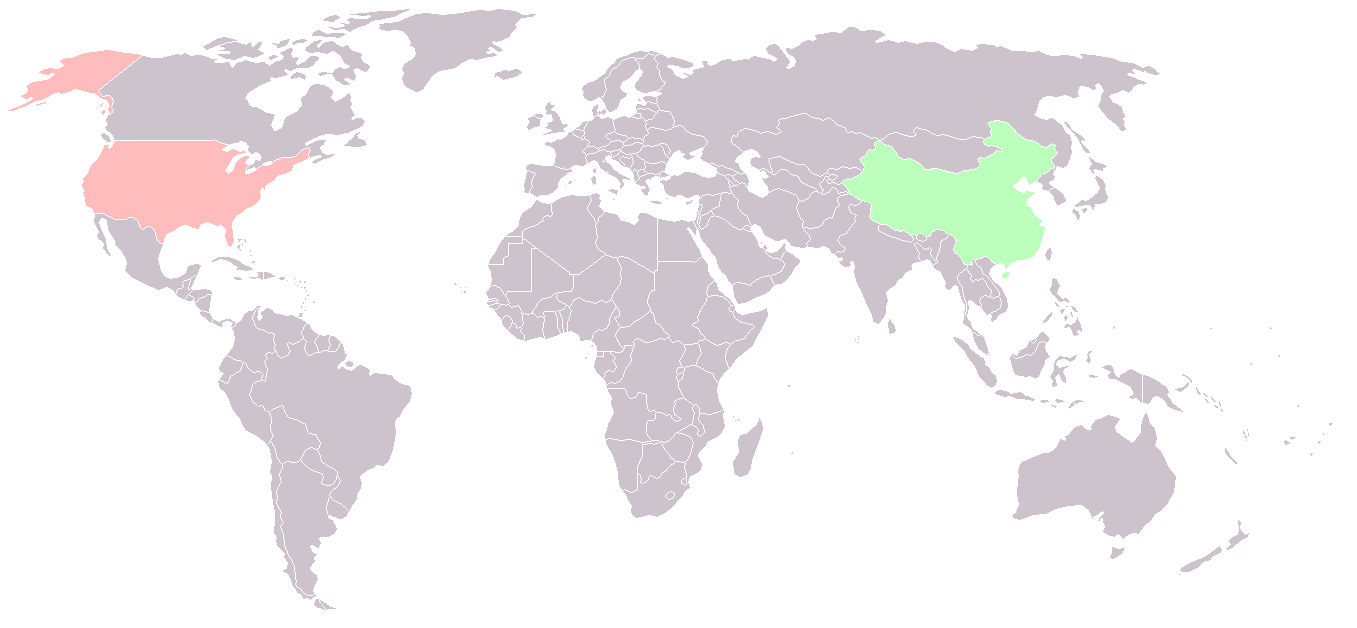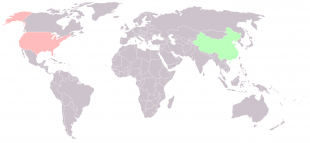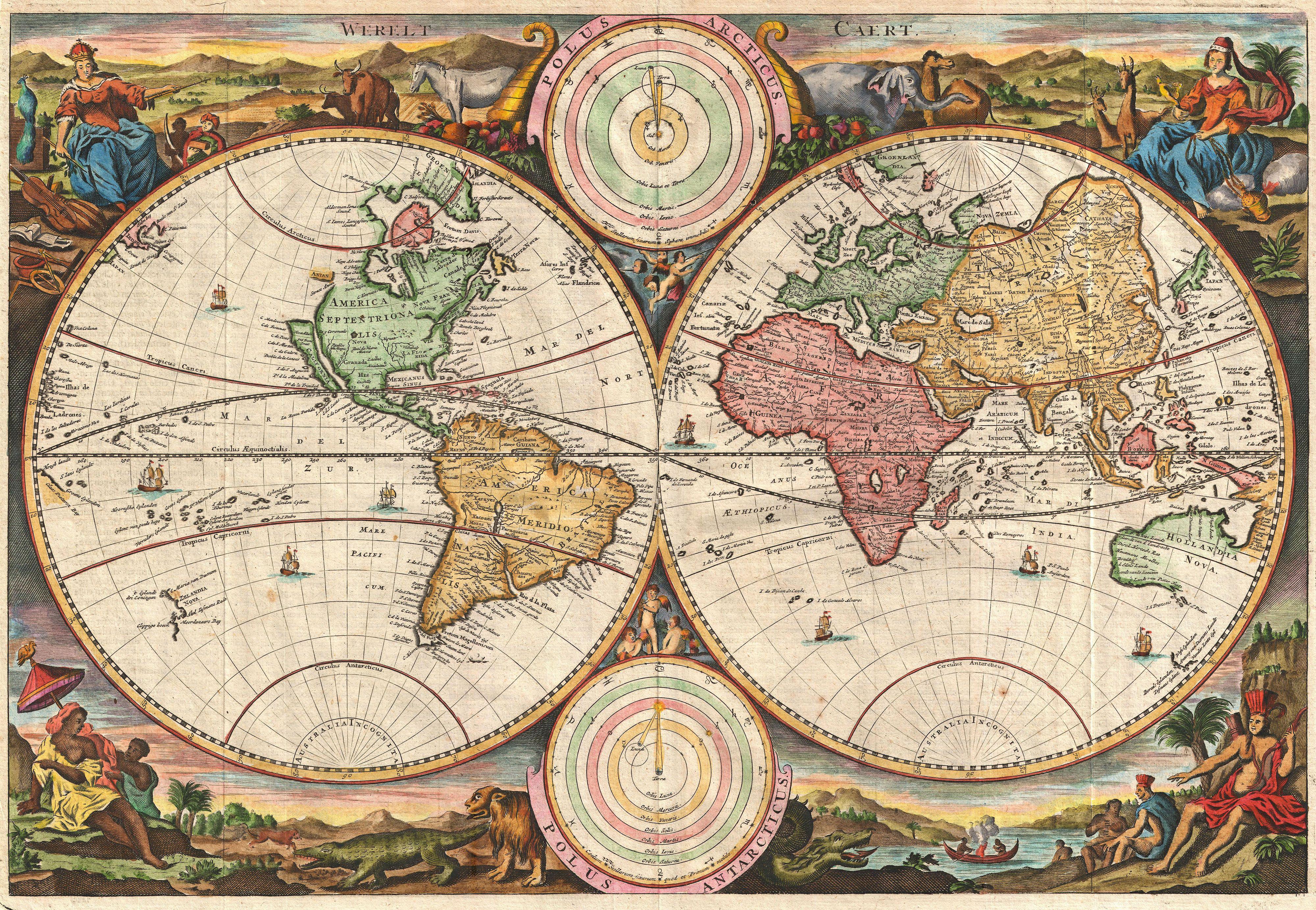
Trade Trap: China and the US Must Avoid a ‘New Cold War’
US President Donald Trump’s trade war against China and the world is subverting the global open trade order and effectively dismantling the World Trade Organization as the universal authority for the resolution of trade disputes.
This trade friction, which is not limited to China and the US, has deep roots in the restructuring of domestic politics taking place in the two largest economies in the world, as well as in changes in the mutual perceptions the countries have of one another. While China-US interdependence and common interests continue to expand, their technological and strategic competition have come earlier than expected. Economic competition, combined with differences in ideology, development models and political systems, may push China and the US into the dangers of a “new Cold War.”
How to predict the impact of a possible trade war on China-US relations? How will the domestic structural changes taking place in the two countries affect their relations? Can China-US economic and trade relations still play a stabilizing role in the world? Can China and the US shake off the prospect of a new Cold War? These are the main questions I will address in this essay.
Trump’s Trade War with China and the World
On March 22, the Office of the US Trade Representative (USTR) released a Section 301 report on China’s trade practices. Based on that report, Trump issued a presidential memorandum that called for countering China’s “economic aggression,” and instructed his administration to impose extra import tariffs on US$50 billion in goods from China, and to restrict Chinese investments in the US. The report mainly accused China of restricting the ownership rights of foreign enterprises and demanding the establishment of joint ventures, thus forcing US companies to transfer technology to Chinese companies.1
On March 8, before the launch of the trade war with China, the US had announced the results of an investigation under Section 232 (the “national security” exemption) of the US Trade Expansion Act of 1962, and declared it would impose a tariff of 25 percent on imports of steel into the US and a 10 percent tariff on aluminum imports. While these measures would have an impact on China, the countries that would be most severely affected are close US allies, including Canada, the European Union and Japan. So far, only South Korea has agreed to accept “voluntary” export restrictions to reduce trade in steel and aluminum products. Trump himself revealed that he will launch attacks against automobiles made in Germany and other countries.
Trump’s trade policy reflects his “America First” political philosophy and his adherence to an outdated concept of trade that pays overwhelming attention to trade imbalances. He believes that all countries that have a trade surplus with the US are engaged in “unfair” trade. To correct this, he believes the US must leverage its domestic laws to impose sanctions or threaten sanctions on its trading partners. The Section 301 and Section 232 actions are all unilateral, based on US domestic trade laws, in violation of the obligations of the US as a WTO member, thus severely impacting the multilateral trading system the US helped to establish after the Second World War. In addition to launching a unilateral trade war, the US is blocking the appointment of new judges for the WTO dispute settlement mechanism, a move aimed at paralyzing the mechanism as an excuse for its unilateral measures.
After three rounds of consultations and talks, China and the US have basically reached an agreement. That is, China will adopt a large-scale increase in imports of agricultural products and liquefied natural gas (LNG) from the US as a way of greatly reducing the US trade deficit with China. On the other major US goals, China’s market opening and industrial policies included in Beijing’s “Made in China 2025” plan should be more important than shrinking the trade deficit, in the view of US big businesses and strategic planners. Already, China has taken many unilateral steps to meet the needs of the US. It has announced a large-scale reduction of tariffs on automobiles, drugs, cosmetics and other goods, and accelerated the opening-up of the financial sector. Foreign financial institutions are entitled to own a majority of shares in securities companies by the end of June 2018, rather than in three years. Also, China has promised that its 2025 plan is mainly “guidance” rather than a “mandatory” plan. On the controversial case of the Chinese telecom company ZTE — which faced a crippling ban on buying US components for shirking an agreement with US authorities over its violations of sanctions against Iran and North Korea — Chinese negotiators seemed to accept Washington’s hefty penalty of US$1 billion on the company and the inclusion of a US-appointed compliance team within the firm, in return for a US agreement to halt the ban and allow the company to continue operations and avoid the loss of some 70,000 jobs. 2
All these Chinese concessions should be enough to enable Trump to claim that he has won a fully-fledged trade war with China and met his needs ahead of the mid-term US elections. Moreover, he is likely to announce at the same time that the Section 301 sanctions against China will remain in effect, and that the US still has the power to slap tariffs on the US$50 billion in Chinese exports involved in the Made in China 2025 plan. It can be expected that Trump will use this leverage to make more demands on China, and that China and the US will experience more episodes of trade friction.
In short, Trump and his administration’s thinking on trade policies reflect views that are behind the times and violate WTO obligations. The “America First” protectionist trade policy is subverting the very multilateral trading system the US itself established.
Domestic Pressures in China and the US
After the collapse of the former Soviet Union, economic globalization accelerated, and both China and the US have benefited greatly. Over the past 20 years, the two countries adopted similar policies of opening up their markets and embracing globalization. As a result, a highly interdependent economic relationship was formed between the two, which some scholars dubbed “Chimerica.”3
While globalization has led to rapid economic development, it has brought about some negative effects, which are mainly manifested in the widening gap between the rich and the poor in the US and China. The US has the worst case of wealth disparity in terms of the Gini index — a widely used measure of income distribution — among advanced economies. China, as the largest developing economy, has long been aware of the problem of uneven development and adopted policies such as establishing a nationwide social security system. To a large extent, it can be said that the major political and economic changes that have taken place in China and the US in recent years are in some measure a response to the negative effects of globalization. The difference lies in the different political systems in the two countries. The US elected Trump, with his strong populist and protectionist ideology, as president in 2016. In China, meanwhile, President Xi Jinping has led a strong anti-corruption campaign that began in 2012, as well as restructured party and state institutions to re-centralize power and strengthen the authority of the central government and leadership. In addition, more steadfast efforts have been undertaken to alleviate poverty, restructure the economy and protect the environment.
Trump’s election and mode of governance have brought great changes to the US. First, the center of gravity that has dominated the US for many years has shifted from the Northeastern part of the country (the Boston-New York-Washington corridor) and the West Coast to the new power center formed by the “rust states” of the Midwest and conservative agricultural states. Trump is clearly more concerned with winning voter support in the “swing states” of the Midwest, where his showing figured prominently in his election victory. By launching a full-scale trade war, Trump’s approval rating has surpassed that of former President Barack Obama in the same period of his presidency.
Second, Trump and his supporters in the Midwest have pushed the US to adopt a “reverse globalization” policy. In terms of economic and trade policies, Trump seems to be reversing the US policy of emphasizing the growth of the online and high-tech sectors over the past 20 years in favor of trying to revive the manufacturing sector in order to correct trade imbalances. In terms of foreign policy, Trump has changed the long-held view of the liberal international order led by the US, and applied protectionist trade pressure on allies, and demanded that they increase defense spending and purchase more US weapons — measures aimed at reducing the US fiscal burden.
More important, Trump’s presidency has brought about a fierce clash of values, and the country’s social and political consensus has been greatly weakened. Trump and his supporters have been accused of adhering to such ideas as white supremacy and other extreme conservative viewpoints that are incompatible with the liberalism and progressivism advocated by pro-globalization elites, leading to unprecedented divisions in US society.
In China, through changes over the past five years, the country’s leadership, with Xi as the core, has re-established its authority, restructured new policy institutions and formulated a clearer medium- and long-term development strategy for the country. Although China’s national development goals and strategies have maintained a strong continuity, the ways and means for achieving the strategy have changed through major reforms of the party and state system. Central authority has been re-strengthened, and at the same time, supervision over the exercise of public power has been bolstered.
The structural changes in the US and China can be called revolutionary, but the results are different because of the different political systems. Under the US election system, Trump was elected with a slight majority of votes in the electoral college (although he actually lost the popular vote to Democratic rival Hillary Clinton), creating more political and social opposition, undermining the continuity of American internal and external policies, and causing great damage to US soft power. In contrast, the changes under the Chinese system ensure the continuation of policies (albeit with some uncertainties about the future), and at the same time overcome the drawbacks of decentralized power, lack of coordination and vulnerability to corruption in the old institutions and practices. As a result, the domestic foundation of China’s foreign policy has also become stronger.
Change and Continuity in China-US Relations
The domestic restructuring in China and the US constitute a new foundation for bilateral relations in the current era. From a domestic perspective, rising conflict in China-US relations under the Trump presidency has a certain air of inevitability.
Trump, his administration and its constituencies are opposed to economic globalization and are demanding a major adjustment in the relationship between the US and the global economy. Naturally, China-US economic relations are bearing the brunt of this change. The current extensive economic and trade relationship between China and the US is the product of rapid economic globalization over the past 20 years. Because Trump views the US trade deficit with China as incompatible with the goal of “America First,” he is demanding a dramatic adjustment. In addition, the US is gradually viewing the rise of China, especially its increasing military strength, as a threat that has started to limit the freedom of the US to maneuver in the Asia-Pacific region.
However, the complex interdependence formed during the era of economic globalization will still limit any substantial deterioration in China-US relations in the near future. Despite increasing frictions, China-US relations will continue to be characterized by shared interests and cooperation.
First, US-China trade has reached nearly US$700 billion (trade in goods and services combined), surpassing any bilateral relationship in history. The idea of “decoupling” proposed by some in the US and China is not practical because the cost to both sides would be too high. To add to this, China-US monetary and financial relations are also very close, forming a so-called “balance of financial terror” due to their tight interdependence (a phrase coined by former US Secretary of the Treasury Lawrence Summers).4 China’s continued purchase of US Treasury bonds is still very important for supporting the US economy and the status of the dollar. In turn, if China wants to have greater influence in the international financial and currency markets, it will also be inseparable from the dollar and the US market.
Second, after more than 40 years of development, relations between the two countries have formed a dense network of close interpersonal relationships and various channels of dialogue. The relationships are linked to academic circles, financial circles, and ordinary families. This is also an important constraint on the notion of a “decoupling” between the two countries.
Third, the personal relationship between the leaders of China and the US is particularly important at present. So far, the interactions between Xi and Trump have been good, and a relatively smooth communication channel has been formed.
Fourth, China’s strategies are not intended to challenge the hegemony of the US. China’s aim is to achieve the medium- and long-term goals of national modernization. Its foreign policy is mainly based on international economic cooperation, and it supports existing international mechanisms and is promoting their reform. The country’s national defense policy is mainly aimed at self-defense. At this stage, China’s strategies, policies and actions do not pose a substantive challenge to US dominance in the international system. While many people in the US tend to believe that China’s development model and philosophy pose a challenge to the US, this argument does not make much sense because China does not advocate exporting ideology and emphasizes respect for the right of each country to choose its own development path.
Choosing the Future
For now, Trump’s “America First” policy is focused on seeing the trade imbalance as a long-term threat to US national security. Although the influence of hardliners and security strategists on maintaining US hegemony is on the rise, they have not yet dominated the direction of Trump’s China policy. However, we must be vigilant. If China-US trust cannot be restored and promoted, the Taiwan issue, the issue of the South China Sea, and competition in the hi-tech sector may push China and the US into a new Cold War, repeating the history of the US-Soviet confrontation.
The future of China-US relations faces two options. The first is that the two countries strengthen cooperation under the framework of global governance. China and the US can reach a lot of consensus on the framework of global governance and jointly provide international public goods to safeguard common interests. As the world’s two largest economies, they have special responsibilities for maintaining global peace and stability and safeguarding the global open trade system and the stability of the international financial system. In the past, the two countries, generally speaking, handled their relations in a practical way, and as a result, their shared interests and consensus have continued to expand. Noticeably, they have made considerable progress in cooperation within the G20 framework, and the US has also shown some flexibility in allowing China to play a greater role, while China respects the status of the US in the international system.
The other option is the so-called decoupling of the economies of China and the US, with each building its own system and eventually colliding with each other, including in a new Cold War. The cost of decoupling would be huge, and it is not a realistic choice for either China or the US.
The scenario of a new Cold War could be avoided if the two countries work together on the following points:
• First, to avoid decoupling, confrontation and a new Cold War, the most important thing is for China and the US to conduct effective dialogue and communication, achieve strategic trust and reduce the current trust deficit. What is particularly noteworthy at present is that many academics, opinion writers and think tanks in the US have misunderstood China’s development model and important domestic political changes since the 19th Party Congress in Beijing in October of last year. Some moderate US scholars and experts advocating engagement with China have expressed their disappointment and frustration about the political changes in China. As a result, Chinese leaders need to do more explaining to American elites to reduce misunderstanding about China’s political changes.
• Second, it is necessary to adhere to the basic policy of building a “new type of great power relations” between China and the US. In 2012, President Xi proposed such a strategic idea, in which both countries would commit to establishing such relations, based on the principle of no conflict, no confrontation and mutual benefit. Facing the rapid rise of China, US elites have a deep sense of anxiety about the possibility of America’s decline. It is all the more necessary for the two countries to adhere to and implement this strategic policy, in order to avoid the so-called Thucydides trap, which postulates that war between a rising power and an established power is inevitable.
• Third, both sides should properly handle economic and trade frictions. In the face of dissatisfaction and complaints from the US government and US corporations, the Chinese side should realize that this is an expression of the strong US interests in the Chinese market. According to 2017 statistics, China has surpassed the US as the world’s largest consumer market. The latest survey data from the American Chamber of Commerce in Shanghai also showed that US-invested companies in China are significantly profitable and over 60 percent of US companies plan to expand their investment in China.5 Economic and trade relations as a “stabilizing stone” in bilateral relations have not been shaken. In economic and trade negotiations, the Chinese side should adhere to principles, and respond to unreasonable US demands with strength. At the same time, China must deepen reforms and expand its opening up to consolidate the common interests that are the foundation of China-US relations.
By Wang Yong, professor at the School of International Studies and director of the Center for International Political Economy at Peking University, Beijing, China.
(Global Asia)









